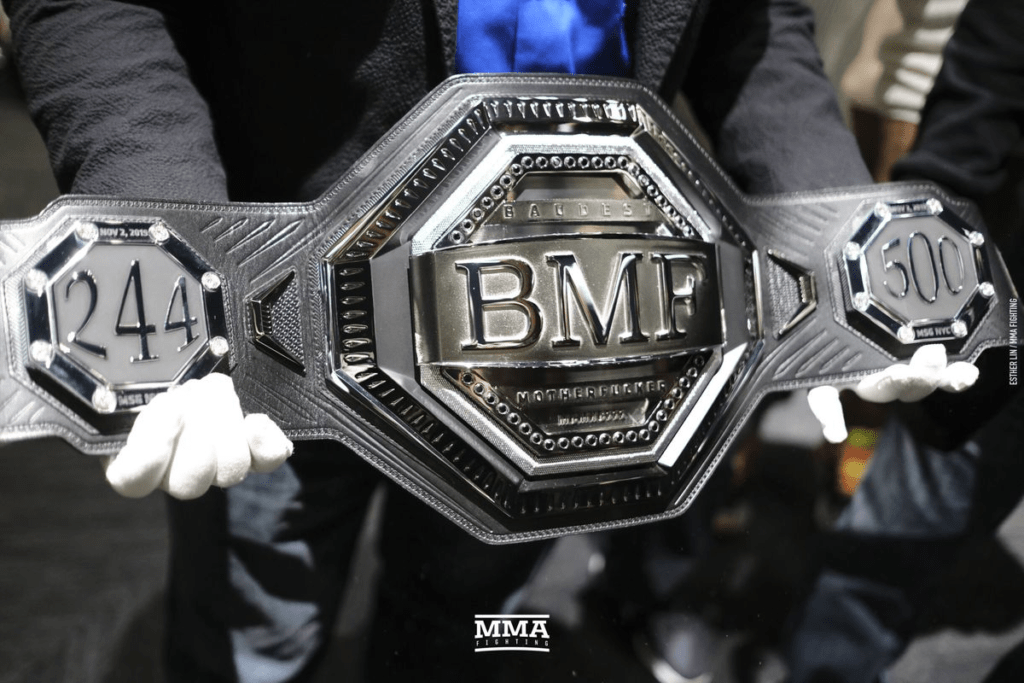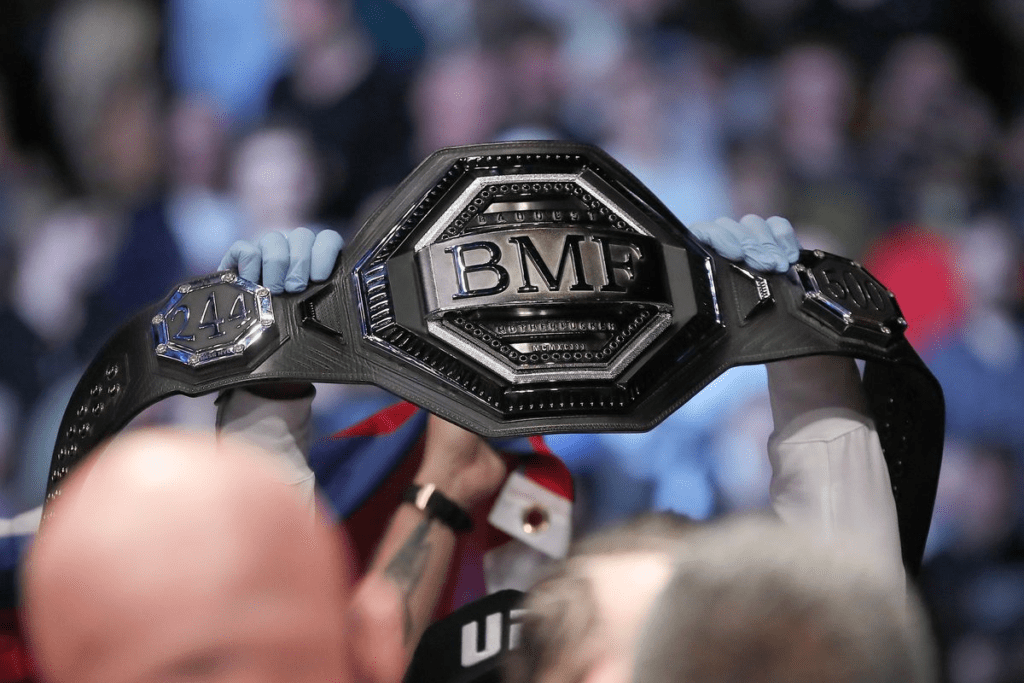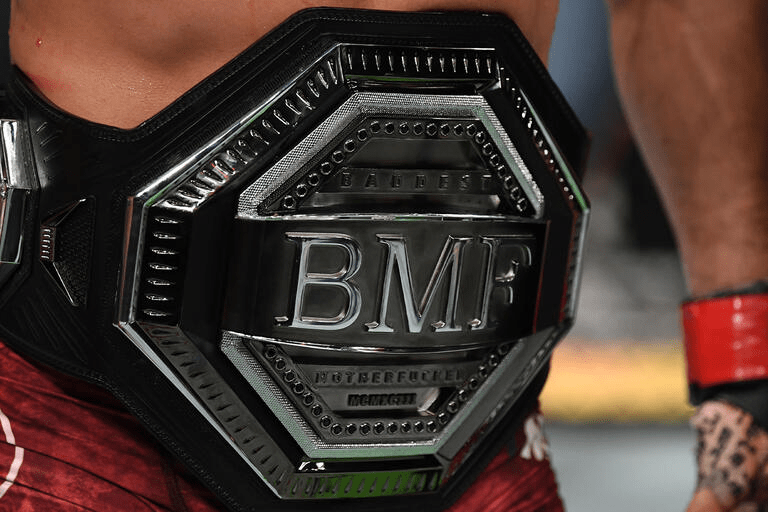
What Makes the BMF Belt a Unique Symbol in the UFC?
The BMF (Baddest Motherf***er) belt in the UFC clearly recognizes a fighter’s toughness. It transcends weight classes to capture the essence of being the hardest-hitting competitor. Born from a challenge echoed throughout the fighting community, the BMF title represents more than mere skill—it embodies spirit, entertainment, and raw grit.
The belt was introduced following Nate Diaz‘s challenge to Jorge Masvidal, culminating in their iconic bout. Since then, the BMF title has become a symbol of the UFC’s most gritty and entertaining fighters. Unlike traditional championships, this belt honours a fighter’s legacy, ability to engage fans and street credibility.
Trending Now!!:

Though it wasn’t on the line at UFC 251, the BMF belt has been contested in action-packed fights, solidifying its status as a unique and coveted accolade within the UFC. It signifies not just who is the best fighter but who embodies the “badass” spirit of MMA, making the BMF belt a cherished emblem of the sport’s most daring competitors.
At the core of the UFC’s competitive landscape lies this unconventional title: the BMF belt. But what does BMF really mean, and how does it compare to traditional titles? Let’s explore the origins, significance, and standing of the BMF belt in the context of UFC 251.
The Genesis of the BMF Belt
The BMF belt, an acronym for “Baddest Motherf***er,” was introduced in the UFC as a unique accolade, not tethered to weight classes but to the spirit of the fight. This title was born from a challenge thrown down by Nate Diaz, who called out Jorge Masvidal in a post-fight interview, suggesting a fight to determine who was indeed the “baddest” in the UFC.
This call to arms resonated with fans and fighters alike, leading to the creation of a belt that symbolizes raw toughness and the fighter’s persona over technical prowess or weight class.
The Significance of the BMF Title

Unlike other UFC titles, which are strictly tethered to specific weight divisions, the BMF belt celebrates a fighter’s legacy, entertainment value, and overall badassery. Fighters like Masvidal, who won the inaugural BMF title against Diaz, embody what the belt stands for: a mix of street credibility, knockout power, and a flair for drama that captivates audiences.
The BMF Belt at UFC 251
UFC 251, headlined by Kamaru Usman defending his welterweight title against Jorge Masvidal, sparked discussions on whether the BMF belt could be on the line. However, despite Usman’s keen interest, Dana White confirmed that the BMF title would not be contested during this event.
This decision underscores the UFC’s approach to keeping the BMF belt’s prestige intact, not allowing it to be overshadowed by or confused with traditional championship bouts.
Future of the BMF Belt
Post-UFC 251, the BMF belt’s narrative continued to evolve. The belt was later contested between Dustin Poirier and Justin Gaethje at UFC 291, showcasing its value in drawing fans with the promise of an all-out war rather than just a fight.
The tradition continued with Max Holloway and Justin Gaethje battling for it at UFC 300, highlighting the belt’s role in showcasing the most thrilling, no-holds-barred matchups.
Conclusion

The BMF belt in UFC represents more than a championship; it’s a symbol of a fighter’s heart, a testament to their willingness to entertain and unyielding spirit. While it wasn’t on the line at UFC 251, its legacy as the UFC’s symbol of ultimate grit continues to grow, promising fans epic showdowns where the true essence of mixed martial arts is celebrated.
The BMF belt isn’t just about who’s the best; it’s about who’s the baddest, most entertaining, and most memorable, leaving an indelible mark on UFC history.
